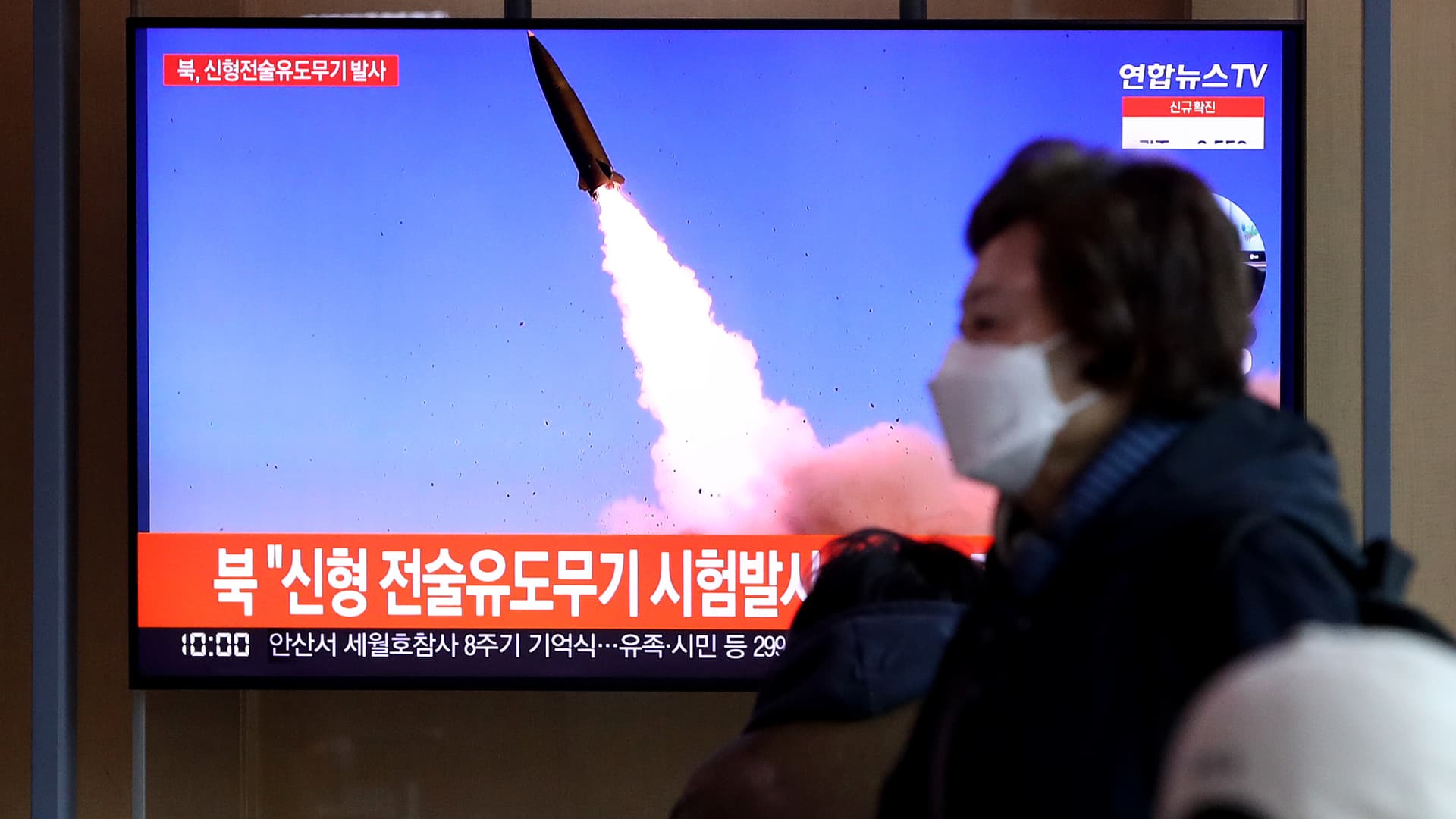North Korea fires a ballistic missile into the Sea of Japan, South Korea says

There’s an alarming change in the way that North Korea is approaching nuclear weapons, says Jeffrey Lewis, a professor at the Middlebury Institute of International Studies.
Chung Sung-jun | Getty Images News | Getty Images
WASHINGTON – North Korea fired a ballistic missile that likely flew over Japan, the militaries of South Korea and Japan said Wednesday evening.
The unidentified ballistic missile was fired into the Sea of Japan, South Korea’s Joint Chiefs of Staff confirmed to NBC News.
The White House and Pentagon did not immediately respond to CNBC’s request for comment.
The latest missile test comes as members of the United Nations Security Council convened a meeting to discuss North Korea’s Oct. 3 test of an intermediate-range ballistic missile over northern Japan. The U.N. prohibits North Korea from testing ballistic and nuclear weapons.
The missile traveled 2,800 miles, a distance that puts the U.S. territory of Guam within its trajectory, before splashing down into the Pacific Ocean.
The provocative test prompted late-night calls from White House national security adviser Jake Sullivan to his Japanese and South Korean counterparts. President Joe Biden condemned the missile test in a phone call with Japanese Prime Minister Fumio Kishida on Tuesday. Biden also discussed ways to “limit North Korea’s ability to support its unlawful ballistic missile and weapons of mass destruction programs,” according to a White House readout of the call.
The test, the first in five years to fly over Japan, was answered with a volley of U.S. and South Korean missiles. The Pentagon said that the four missiles were launched into the waters off the east coast of the Korean Peninsula.
In the past 10 days, Pyongyang has carried out five separate launches of eight ballistic missiles.
“Among these launches, the latest one was especially significant. It flew over Japan and impacted in the Pacific Ocean for the first time since 2017. I assume we can all imagine how terrifying it must be to see a missile flying overhead,” Ishikane Kimihiro, the Japanese ambassador to the United Nations, said before the Security Council.
“This is absolutely unacceptable, and Japan condemns it in the strongest possible terms,” he added.
U.S. Ambassador to the United Nations Linda Thomas-Greenfield said the Biden administration “will not stand by” amid Pyongyang’s brazen missile tests.
“Despite a lack of engagement from North Korea, the United States remains committed to dialogue and diplomacy. The United States, however, will not stand by as North Korea directly threatens the United States, our allies and the entire world,” she said in remarks before the Security Council.
Meanwhile, North Korea’s foreign ministry condemned the U.S. for calling the Security Council meeting and for participating in joint military drills with South Korea.
“The Democratic People’s Republic of Korea is watching the U.S. posing a serious threat to the stability of the situation on the Korean peninsula and in its vicinity by redeploying the carrier task force in the waters off the Korean peninsula,” the foreign ministry wrote in a statement.
Under Kim Jong Un, the reclusive state has conducted its most powerful nuclear test, launched its first-ever intercontinental ballistic missile and threatened to send missiles into the waters near the U.S. territory of Guam.
Since 2011, Kim has launched more than 100 missiles and conducted four nuclear weapons tests, which is more than what his father, Kim Jong Il, and grandfather, Kim Il Sung, launched over a period of 27 years.
So far this year, North Korea has fired 39 ballistic missile tests.









